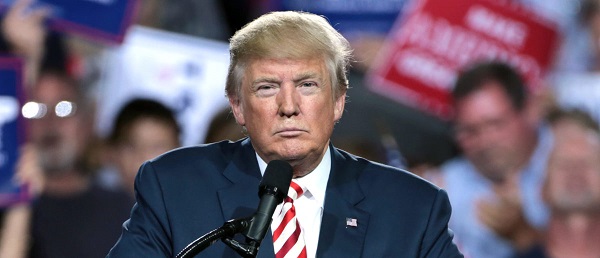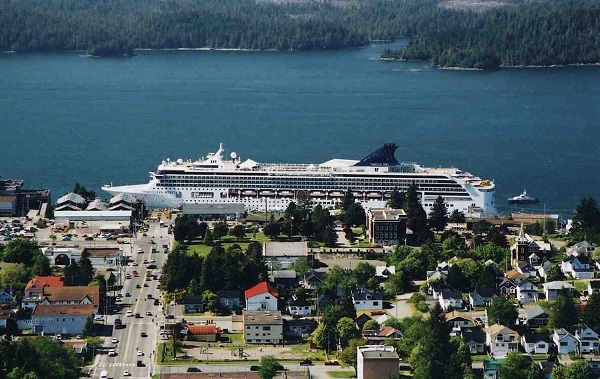Uncategorized
Ukraine urges NATO to deploy ships in dispute with Russia

KIEV, Ukraine — The president of Ukraine is urging NATO to deploy warships to the Sea of Azov, a proposal that has been sharply criticized by Russia as a provocation that could worsen tensions between the two countries following a weekend confrontation in the waters off the Crimean Peninsula.
U.S. President Donald Trump said Thursday he was
In an interview published earlier Thursday with the German daily Bild, Ukrainian President Petro Poroshenko laid out his hope that NATO would “relocate naval ships to the Sea of Azov in order to assist Ukraine and provide security” against Putin’s expansionist ambitions.
The Russian coast guard fired on and seized three Ukrainian vessels and their crews on Sunday. Russia alleged the Ukrainian vessels had failed to obtain permission to pass from the Black Sea into the Sea of Azov through the Kerch Strait. Ukraine insisted its vessels were operating in line with international maritime rules in the strait, which separates Russia’s mainland and the Crimean Peninsula that it annexed from Ukraine in 2014.
While condemning the Russian action, NATO is not expected to send ships to the area, a deployment that could trigger a confrontation with Russia. A 2003 treaty between Russia and Ukraine stipulates that permission from both countries is required for warships from anywhere else to enter the internal sea.
NATO spokeswoman Oana Lungescu said the alliance already has a strong presence in the region, and that NATO ships routinely patrol and conduct exercises in the Black Sea, especially those from Bulgaria, Romania, and Turkey, which border the sea.
German Chancellor Angela Merkel said early Thursday that she plans to press Putin at the upcoming G-20 summit in Argentina to urge the release of the Ukrainian ships and crews and to de-escalate the situation.
“We can only resolve this in talks with one another because there is no military solution to all of these conflicts,” she said.
It was not clear whether Merkel knew of Poroshenko’s call for NATO’s deployment when she spoke.
Trump tweeted his decision to cancel a meeting with Putin this weekend. Trump, who was en route to Buenos Aires for the G-20 summit, said he would not be meeting Putin because “the ships and sailors have not been returned to Ukraine from Russia.”
The Kremlin said it has not been notified of a cancellation. Russian news agencies quoted Dmitry Peskov, Putin’s spokesman, as saying that the Kremlin only learned of the cancellation from Trump’s tweet.
Peskov said the cancellation means that Putin will have “a couple of more hours” for “useful meetings” with other leaders of the world’s 20 largest economies.
The Ukrainian government said Russia has blocked commercial traffic to and from Ukrainian ports on the Sea of Azov, which Russia quickly denied.
“Putin wants nothing less but to occupy the sea,” Poroshenko said. “The only language he understands is the unity of the Western world.”
Putin on Wednesday criticized the West for what he described as connivance with Ukraine’s “provocation.”
“The authorities in
In response to Sunday’s events, Ukraine has imposed martial law in parts of the country. Putin accused Poroshenko of provoking the naval incident in a bid to impose martial law to shore up his sagging popularity and sideline competitors ahead of a presidential election in March.
Peskov said Poroshenko’s request for NATO warships is “clearly aimed at provoking further tensions,” adding that it was driven by “electoral and domestic policy motives.”
Poroshenko said that martial law wouldn’t restrict travel, cash withdrawals or currency purchases by Ukrainians, but Russians will face some unspecified constraints.
Ukraine’s Ministry of Infrastructure says Russia has blocked 35 merchant ships from leaving or entering the Sea of Azov since Wednesday.
The ministry said 18 ships have been stuck in the Black Sea, waiting to pass through the Kerch Strait into the Sea of Azov. Another 17 vessels were unable to leave the Ukrainian ports of Mariupol and Berdyansk on the Sea of Azov, it said.
Peskov insisted that Russia hasn’t imposed any restrictions on the ships’ passage, adding that a possible logjam could be linked to poor weather.
Ukraine’s intelligence agency, the SBU, said a Russian fighter jet and a helicopter fired rockets Sunday at the three Ukrainian vessels before they were captured — the first time an airstrike was reported.
“It’s a miracle the Ukrainian seamen have survived,” SBU deputy chief Oleh Frolov told reporters.
There has been growing hostility between Ukraine and Russia since Moscow’s annexation of the Crimean Peninsula from Ukraine in 2014. Russia has also supported separatists in Ukraine’s east with clandestine dispatches of troops and weapons. Fighting there has killed at least 10,000 people since 2014 but eased somewhat after a 2015 truce.
The naval incident marked the first overt clash between Russian and Ukrainian militaries since the 1991 collapse of the Soviet Union. It has fueled fears of a wider conflict and has drawn strong criticism of Russia from the U.S. and its allies.
Amid the tensions, the Russian military said it had deployed another batch of the long-range, S-400 air
Turkish President Recep Tayyip Erdogan said he discussed the possibility of a Turkish mediation to resolve tensions and had separate phone calls with Putin and Poroshenko on Thursday.
Asked about the Turkish offer, Peskov responded that “Moscow is grateful to all those willing to help de-escalate the tensions provoked by the Ukrainian side, but doesn’t see any need for mediation efforts.”
“Those who have such opportunities could help by exerting influence on the Ukrainian authorities,” Peskov said.
___
Isachenkov reported from Moscow. Nataliya Vasilyeva in Moscow, David Rising in Berlin and Lorne Cook in Brussels contributed.
Yuras Karmanau And Vladimir Isachenkov, The Associated Press
Uncategorized
Cost of bureaucracy balloons 80 per cent in 10 years: Public Accounts

The cost of the bureaucracy increased by $6 billion last year, according to newly released numbers in Public Accounts disclosures. The Canadian Taxpayers Federation is calling on Prime Minister Mark Carney to immediately shrink the bureaucracy.
“The Public Accounts show the cost of the federal bureaucracy is out of control,” said Franco Terrazzano, CTF Federal Director. “Tinkering around the edges won’t cut it, Carney needs to take urgent action to shrink the bloated federal bureaucracy.”
The federal bureaucracy cost taxpayers $71.4 billion in 2024-25, according to the Public Accounts. The cost of the federal bureaucracy increased by $6 billion, or more than nine per cent, over the last year.
The federal bureaucracy cost taxpayers $39.6 billion in 2015-16, according to the Public Accounts. That means the cost of the federal bureaucracy increased 80 per cent over the last 10 years. The government added 99,000 extra bureaucrats between 2015-16 and 2024-25.
Half of Canadians say federal services have gotten worse since 2016, despite the massive increase in the federal bureaucracy, according to a Leger poll.
Not only has the size of the bureaucracy increased, the cost of consultants, contractors and outsourcing has increased as well. The government spent $23.1 billion on “professional and special services” last year, according to the Public Accounts. That’s an 11 per cent increase over the previous year. The government’s spending on professional and special services more than doubled since 2015-16.
“Taxpayers should not be paying way more for in-house government bureaucrats and way more for outside help,” Terrazzano said. “Mere promises to find minor savings in the federal bureaucracy won’t fix Canada’s finances.
“Taxpayers need Carney to take urgent action and significantly cut the number of bureaucrats now.”
Table: Cost of bureaucracy and professional and special services, Public Accounts
| Year | Bureaucracy | Professional and special services |
|
$71,369,677,000 |
$23,145,218,000 |
|
|
$65,326,643,000 |
$20,771,477,000 |
|
|
$56,467,851,000 |
$18,591,373,000 |
|
|
$60,676,243,000 |
$17,511,078,000 |
|
|
$52,984,272,000 |
$14,720,455,000 |
|
|
$46,349,166,000 |
$13,334,341,000 |
|
|
$46,131,628,000 |
$12,940,395,000 |
|
|
$45,262,821,000 |
$12,950,619,000 |
|
|
$38,909,594,000 |
$11,910,257,000 |
|
|
$39,616,656,000 |
$11,082,974,000 |
Uncategorized
Trump Admin Establishing Council To Make Buildings Beautiful Again


From the Daily Caller News Foundation
By Jason Hopkins
The Trump administration is creating a first-of-its-kind task force aimed at ushering in a new “Golden Age” of beautiful infrastructure across the U.S.
The Department of Transportation (DOT) will announce the establishment of the Beautifying Transportation Infrastructure Council (BTIC) on Thursday, the Daily Caller News Foundation exclusively learned. The BTIC seeks to advise Transportation Secretary Sean Duffy on design and policy ideas for key infrastructure projects, including highways, bridges and transit hubs.
“What happened to our country’s proud tradition of building great, big, beautiful things?” Duffy said in a statement shared with the DCNF. “It’s time the design for America’s latest infrastructure projects reflects our nation’s strength, pride, and promise.”
“We’re engaging the best and brightest minds in architectural design and engineering to make beautiful structures that move you and bring about a new Golden Age of Transportation,” Duffy continued.
Mini scoop – here is the DOT’s rollout of its Beautifying Transportation Infrastructure Council, which will be tasked with making our buildings beautiful again. pic.twitter.com/
9iV2xSxdJM — Jason Hopkins (@jasonhopkinsdc) October 23, 2025
The DOT is encouraging nominations of the country’s best architects, urban planners, artists and others to serve on the council, according to the department. While ensuring that efficiency and safety remain a top priority, the BTIC will provide guidance on projects that “enhance” public areas and develop aesthetic performance metrics.
The new council aligns with an executive order signed by President Donald Trump in August 2025 regarding infrastructure. The “Making Federal Architecture Beautiful Again” order calls for federal public buildings in the country to “respect regional architectural heritage” and aims to prevent federal construction projects from using modernist and brutalist architecture styles, instead returning to a classical style.
“The Founders, in line with great societies before them, attached great importance to Federal civic architecture,” Trump’s order stated. “They wanted America’s public buildings to inspire the American people and encourage civic virtue.”
“President George Washington and Secretary of State Thomas Jefferson consciously modeled the most important buildings in Washington, D.C., on the classical architecture of ancient Athens and Rome,” the order continued. “Because of their proven ability to meet these requirements, classical and traditional architecture are preferred modes of architectural design.”
The DOT invested millions in major infrastructure projects since Trump’s return to the White House. Duffy announced in August a $43 million transformation initiative of the New York Penn Station in New York City and in September unveiledmajor progress in the rehabilitation and modernization of Washington Union Station in Washington, D.C.
The BTIC will comprise up to 11 members who will serve two-year terms, with the chance to be reappointed, according to the DOT. The task force will meet biannually. The deadline for nominations will end Nov. 21.
-

 Business1 day ago
Business1 day agoCanada Hits the Brakes on Population
-

 Crime18 hours ago
Crime18 hours agoBrown University shooter dead of apparent self-inflicted gunshot wound
-

 Crime2 days ago
Crime2 days agoBondi Beach Survivor Says Cops Prevented Her From Fighting Back Against Terrorists
-

 Frontier Centre for Public Policy1 day ago
Frontier Centre for Public Policy1 day agoCanada Lets Child-Porn Offenders Off Easy While Targeting Bible Believers
-

 Agriculture1 day ago
Agriculture1 day agoWhy is Canada paying for dairy ‘losses’ during a boom?
-

 International2 days ago
International2 days agoHouse Rejects Bipartisan Attempt To Block Trump From Using Military Force Against Venezuela
-

 Automotive2 days ago
Automotive2 days agoFord’s EV Fiasco Fallout Hits Hard
-

 Business1 day ago
Business1 day agoWhite House declares inflation era OVER after shock report










